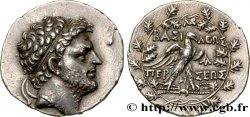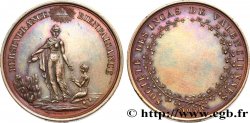fjt_755540 - CORPORATIONS Verriers, Fayenciers, Émailleurs, Patenôtriers 1767
100.00 €(Approx. 108.00$ | 84.00£)
Quantity
Add to your cart

Type : Verriers, Fayenciers, Émailleurs, Patenôtriers
Date: 1767
Mint name / Town : s.l.
Metal : gilt copper
Diameter : 29,5 mm
Orientation dies : 12 h.
Weight : 12,41 g.
Edge : Lisse
Rarity : R2
Coments on the condition:
Patine un peu sombre. Quelques traces d’usure sont visibles à l’avers et au revers
Catalogue references :
Predigree :
Exemplaire provenant de la Collection MARINECHE
Obverse
Obverse legend : LUDOV. XVI. REX. CHRISTIANISS.
Obverse description : Buste à gauche de Louis XVI signé DUV..
Obverse translation : Louis XV, roi très chrétien.
Reverse
Reverse legend : MDS. VERRIERS. FAYANCIERS. EMAILLEURS. PATENOTRIERS. 1767.
Reverse description : Un oeil et XII dans un cercle suspendu à un noeud. Dessous, chapelet, vase et rameaux.
Commentary
Les paternôtriers existent depuis le Moyen Âge, puisque l'on comptait par exemple quatorze d'entre eux à Paris sous le règne de Philippe le Bel.
Ils formaient quatre corporations (ou trois confréries) décrites dans le Livre des métiers d'Étienne Boileau :
patenôtriers d'ambre et de jais (ou jaïs, jayet, gaïet)
patenôtriers de corail et de coquilles de nacre
patenôtriers d'os et corne
patenôtriers de boucles (boules et anneau pour vêtements)
Les apprentis, enfants d'au moins douze ans, passaient entre cinq, huit (os) dix (jais) et douze (corail) années d'apprentissage pour devenir maîtres émailleurs et s'ils prenaient la fuite, le maître patenôtrier devait les attendre au moins une année et un jour. L'entrée dans la confrérie était payante (5 sous).
Voir de nombreux autres détails à http://fr.wikipedia.org/wiki/Paten%C3%B4trier.
Ils formaient quatre corporations (ou trois confréries) décrites dans le Livre des métiers d'Étienne Boileau :
patenôtriers d'ambre et de jais (ou jaïs, jayet, gaïet)
patenôtriers de corail et de coquilles de nacre
patenôtriers d'os et corne
patenôtriers de boucles (boules et anneau pour vêtements)
Les apprentis, enfants d'au moins douze ans, passaient entre cinq, huit (os) dix (jais) et douze (corail) années d'apprentissage pour devenir maîtres émailleurs et s'ils prenaient la fuite, le maître patenôtrier devait les attendre au moins une année et un jour. L'entrée dans la confrérie était payante (5 sous).
Voir de nombreux autres détails à http://fr.wikipedia.org/wiki/Paten%C3%B4trier.








 Report a mistake
Report a mistake Print the page
Print the page Share my selection
Share my selection Ask a question
Ask a question Consign / sell
Consign / sell
 Full data
Full data















